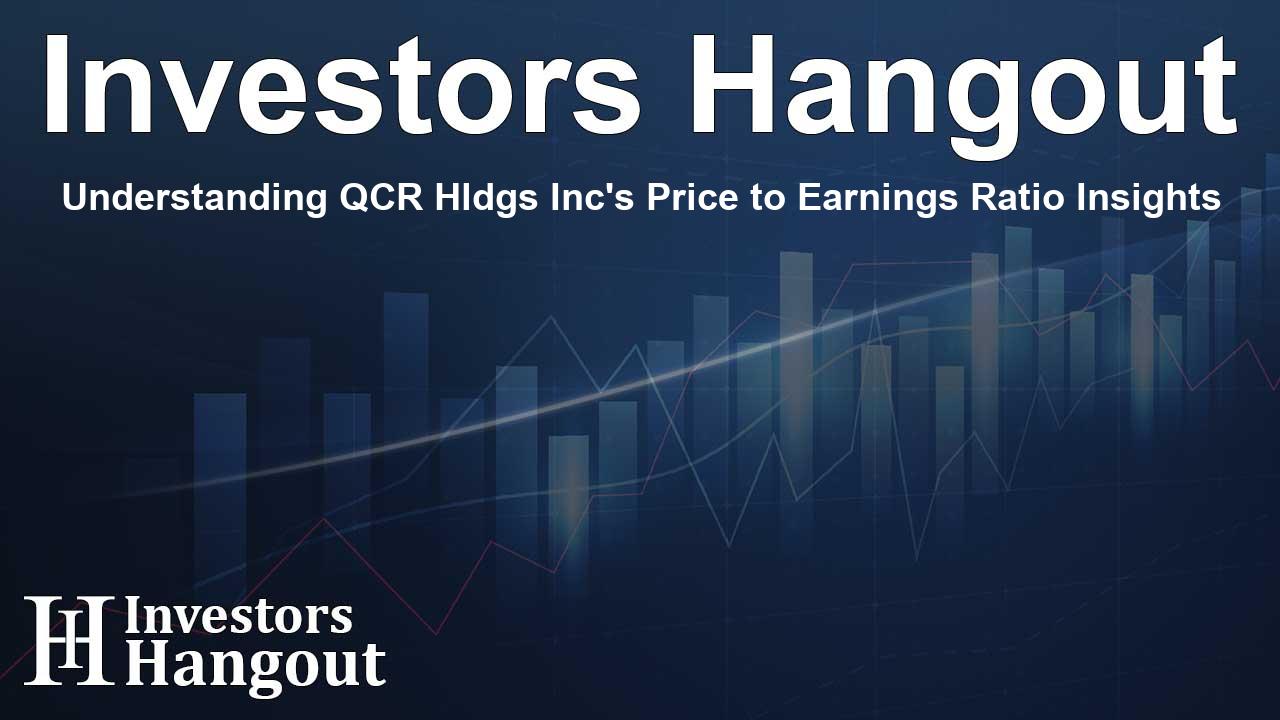Understanding QCR Hldgs Inc's Price to Earnings Ratio Insights

Analyzing the Current Share Pricing of QCR Hldgs Inc.
In today’s market, QCR Hldgs Inc. (NASDAQ: QCRH) shares are priced at $70.48 following a noticeable increase of 0.82%. Over the previous month, the stock has seen a slight decline of 1.80%; however, when viewed over the past year, the stock has appreciated by 2.32%. Investors may find themselves questioning whether this stock is overvalued, especially considering the company’s consistent performance in the current market session.
Understanding the Price-to-Earnings (P/E) Ratio
What is a P/E Ratio?
The P/E ratio serves as a vital metric that compares a company's current share price to its earnings per share (EPS). Investors often utilize this ratio to evaluate how a company is performing compared to its past earnings and to gauge market expectations. A higher P/E ratio suggests that investors are optimistic about future growth, possibly indicating that the stock may be overpriced, while a lower ratio may reflect a more undervalued company position.
Comparing QCR Hldgs P/E to Industry Peers
Currently, QCR Hldgs Inc. boasts a P/E ratio of 10.54, which stands in stark contrast to the industry P/E average of 19.26 within the banking sector. This difference might lead investors to speculate that QCR Hldgs may be undervalued or underperforming compared to its competitors.
Implications of a Lower P/E Ratio
A lower P/E ratio could imply that investors lack confidence in the company’s future growth potential. Thus, despite being perceived as undervalued, it also warns investors of potential stagnation. Investors are advised not to rely solely on the P/E ratio for making investment decisions, as it doesn't account for factors such as broader industry trends or economic shifts that could impact stock prices.
Final Thoughts on P/E Ratios
In conclusion, while the P/E ratio is an instrumental tool for evaluating a company’s performance in the marketplace, it must be utilized in conjunction with other financial metrics and qualitative assessments. Investors should consider various factors including market conditions and company news to paint a fuller picture of investment viability.
Frequently Asked Questions
What does a high P/E ratio signify?
A high P/E ratio typically indicates that investors have high expectations for future growth, which might suggest that the stock is overvalued.
Why is QCR Hldgs' P/E ratio important?
The P/E ratio offers insights into QCR Hldgs' valuation relative to its earnings, aiding investors in informed decision-making.
How does QCR Hldgs' P/E compare to its industry?
QCR Hldgs' P/E ratio of 10.54 is significantly lower than the banking industry's average of 19.26, suggesting potential undervaluation.
Can a low P/E ratio be a red flag?
Yes, a low P/E ratio may signal that investors do not expect significant future growth, but it may also indicate an undervalued stock.
What should investors consider alongside the P/E ratio?
Investors should consider industry trends, economic factors, and company-specific news to make well-rounded investment decisions.
About The Author
Contact Henry Turner privately here. Or send an email with ATTN: Henry Turner as the subject to contact@investorshangout.com.
About Investors Hangout
Investors Hangout is a leading online stock forum for financial discussion and learning, offering a wide range of free tools and resources. It draws in traders of all levels, who exchange market knowledge, investigate trading tactics, and keep an eye on industry developments in real time. Featuring financial articles, stock message boards, quotes, charts, company profiles, and live news updates. Through cooperative learning and a wealth of informational resources, it helps users from novices creating their first portfolios to experts honing their techniques. Join Investors Hangout today: https://investorshangout.com/
The content of this article is based on factual, publicly available information and does not represent legal, financial, or investment advice. Investors Hangout does not offer financial advice, and the author is not a licensed financial advisor. Consult a qualified advisor before making any financial or investment decisions based on this article. This article should not be considered advice to purchase, sell, or hold any securities or other investments. If any of the material provided here is inaccurate, please contact us for corrections.
